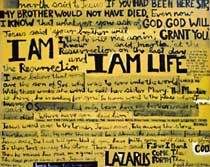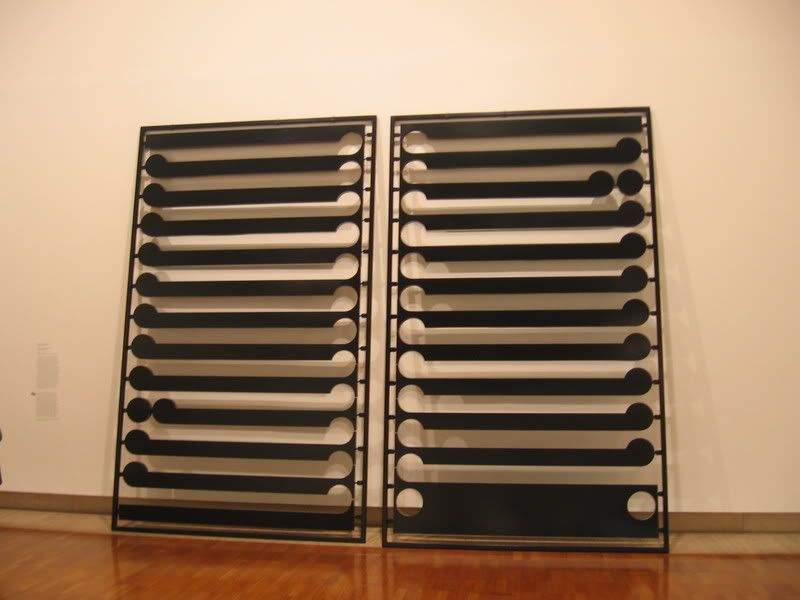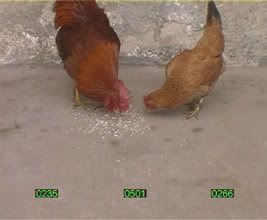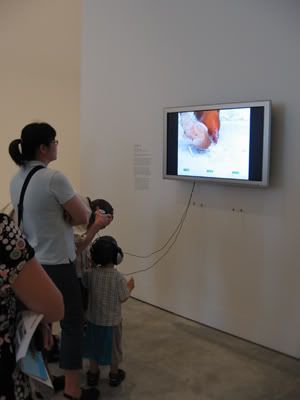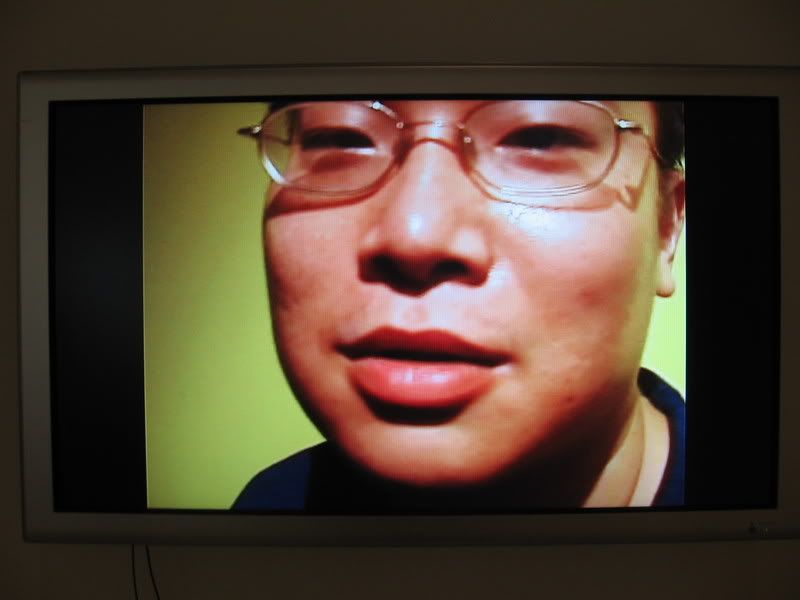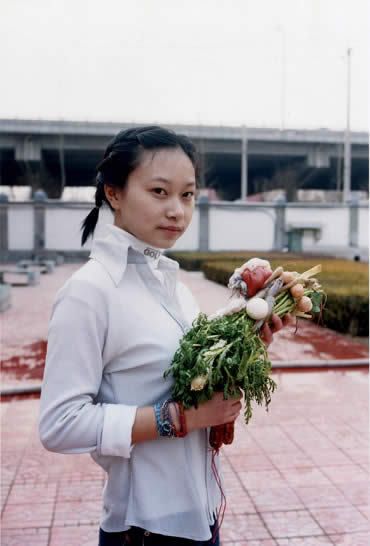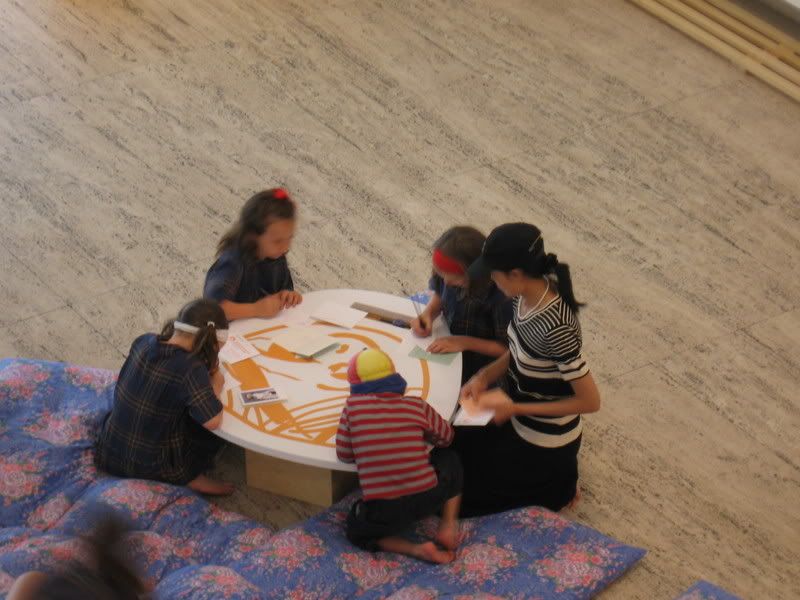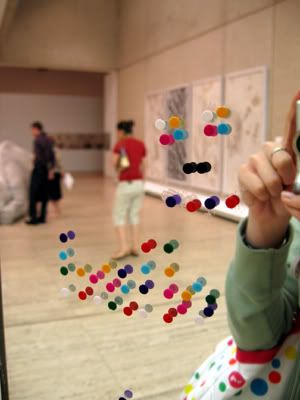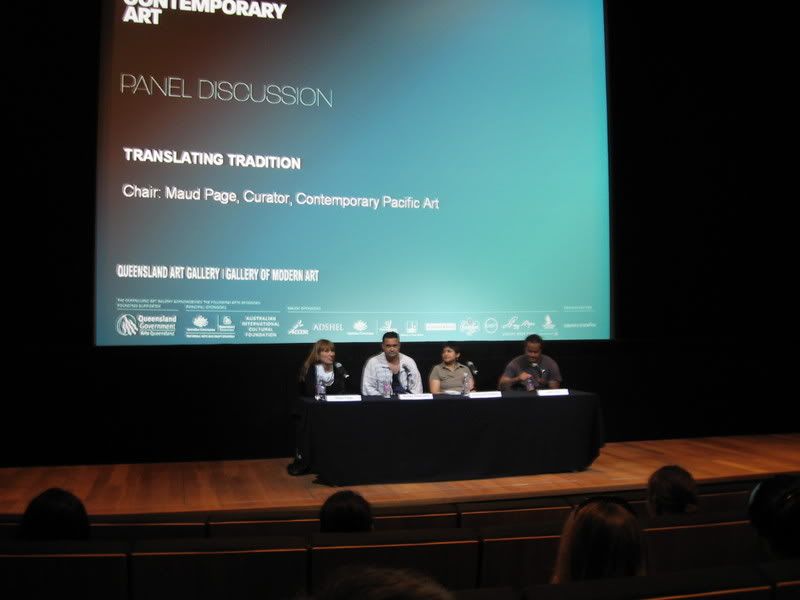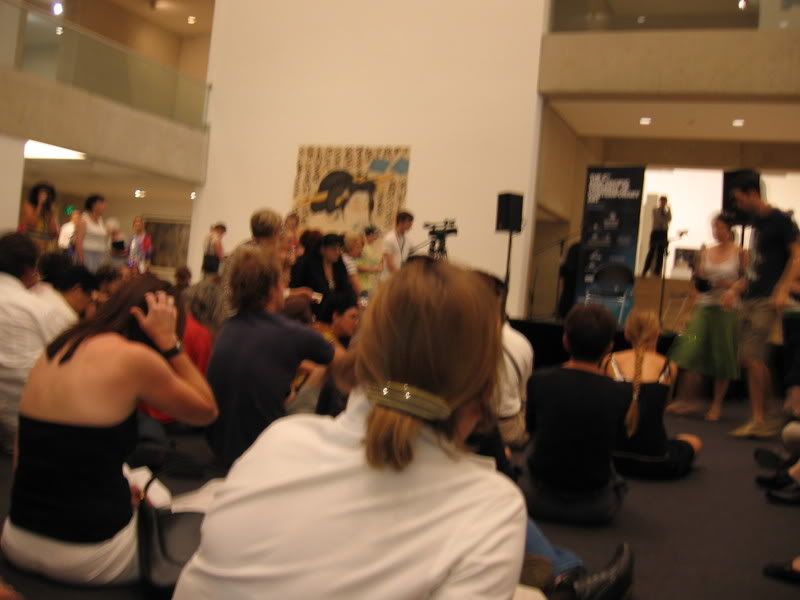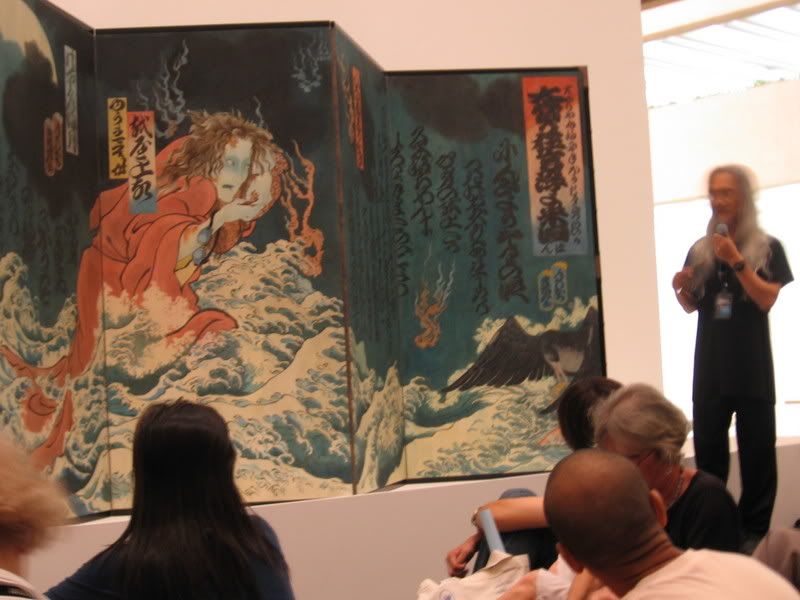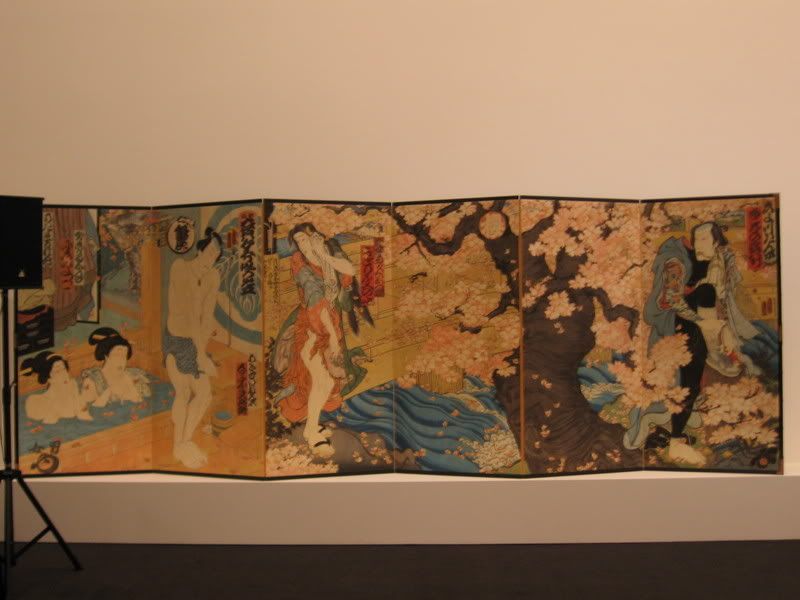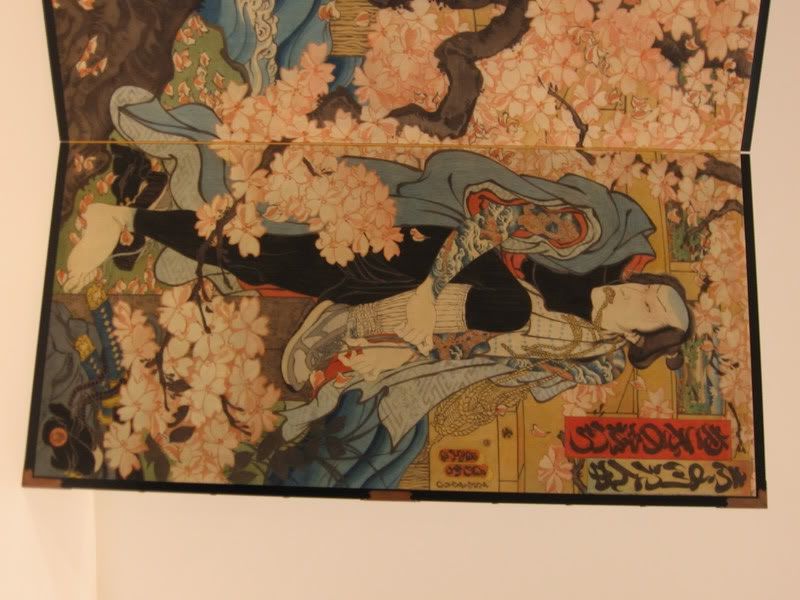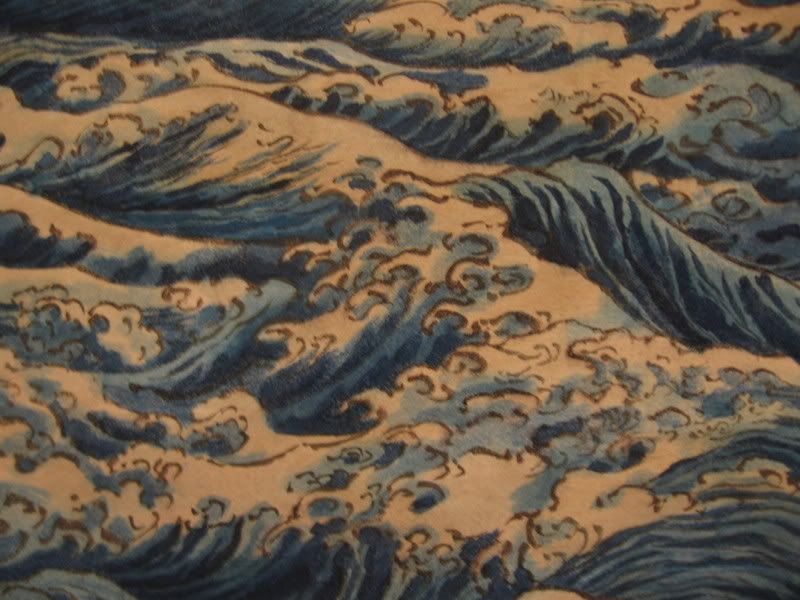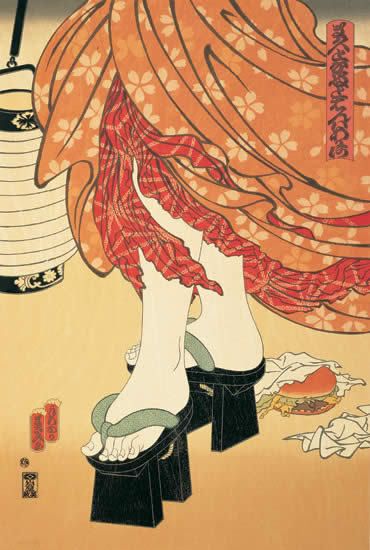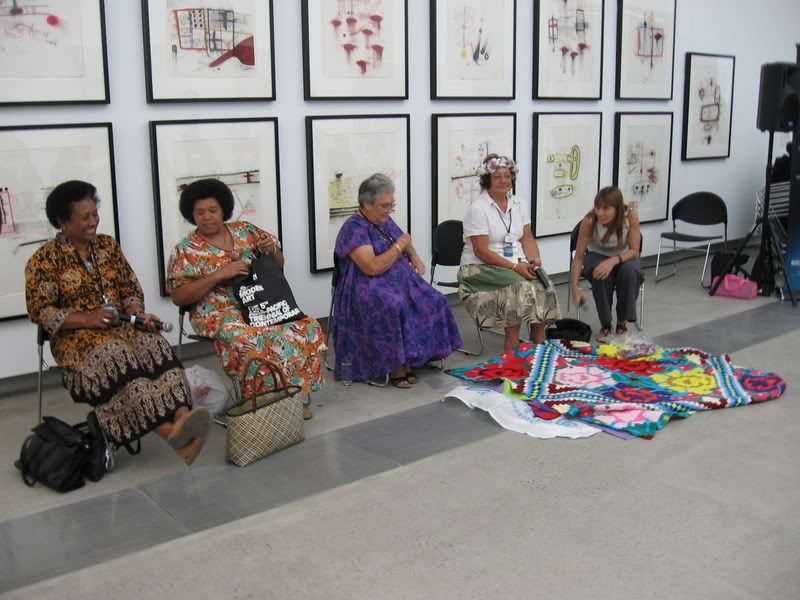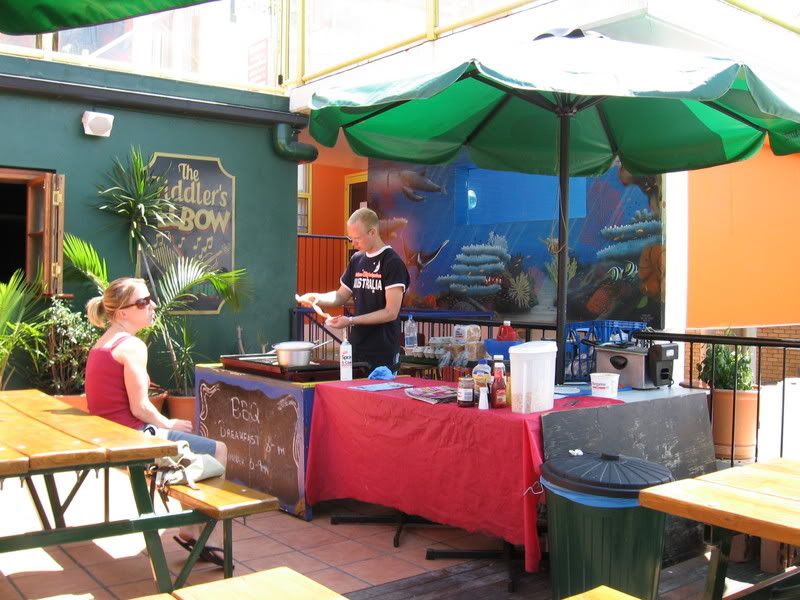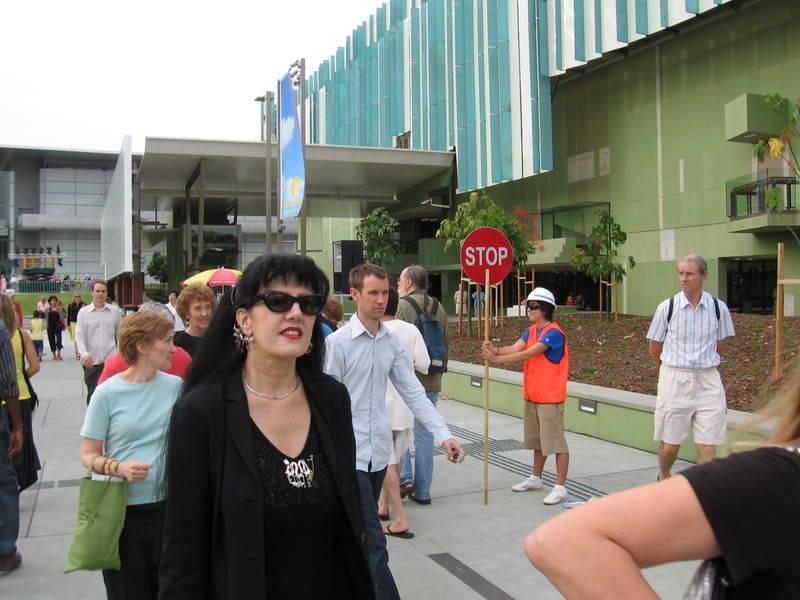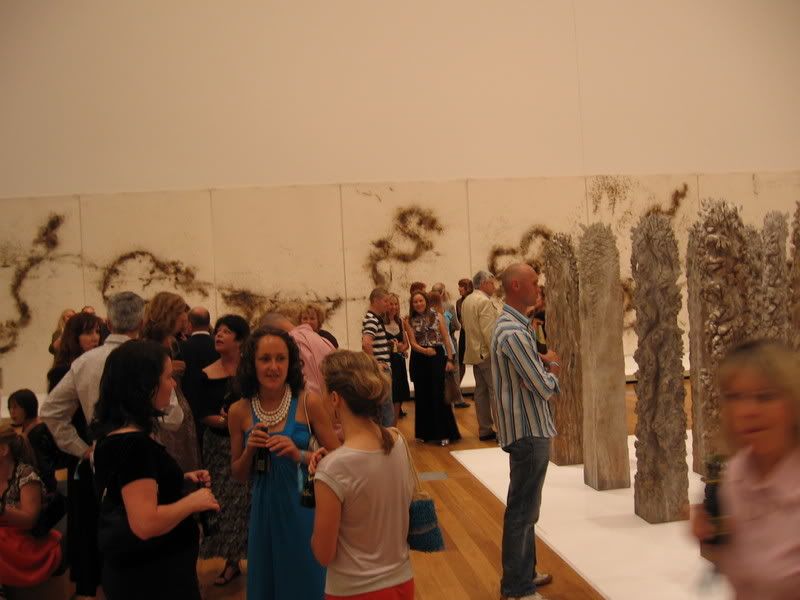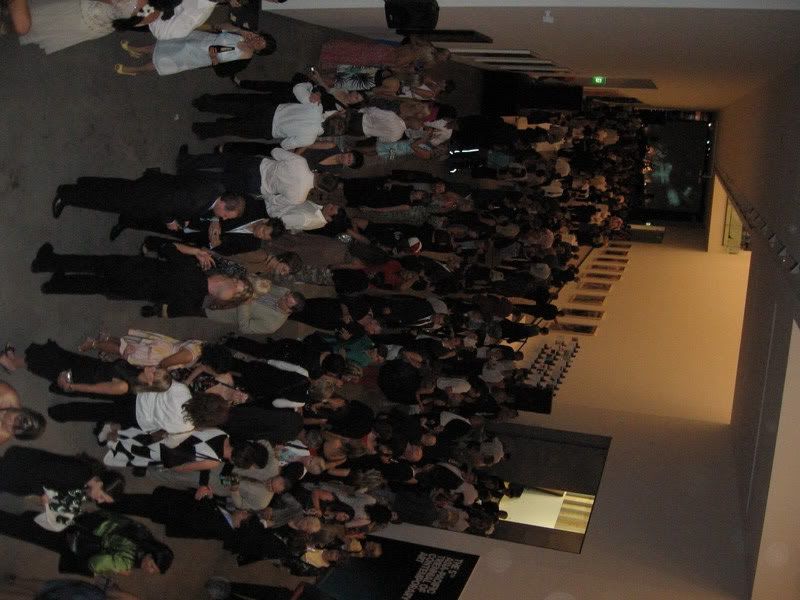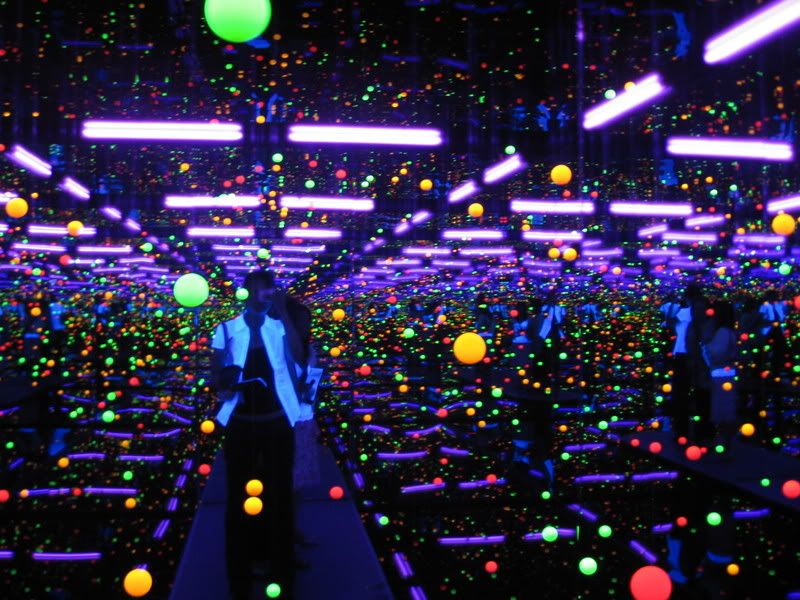Speakers:
Lynne Seer (Assistant Director, Curatorial and collection development)
Andrew Clark (Assistant Director, Public Programs)
Kwon Ki-soo
eX de Medici
Justine Cooper
Eko Nugroho
Khadim Ali50 staffs have worked together for 2 years to present the Kids APT to the audiences. 5 members of senior curatorial team is also part of Kids APT, which shows how important it is.
Kids APT• This years Kids APT represent the best of all the things that the gallery wanted to show in the past exhibitions
• It is a challenge for the Children Arts Centre, to develop an on-going project throughout the year.• There are 6 components to the Kids APT:
- 13 participating artists
- The activity book
- 2 weeks children festival
- New project “Summer Spectacular Queensland” hope to attract the more ‘remote’ community to visit the gallery
- Hopefully can create a series of online activities
• Aim:
- Connecting the younger audiences with Contemporary Art in the Asia-Pacific
- Hope that the kids would ‘take something’ with them when they leave
- To create a chance for the kids and adults to communicate
- The Gallery also hope that the kids would help to ‘open up’ the eyes of the adults who participated the Kids APT with themThe mascot for Kid APT this year is:

Scoots, the turtle!!
Quoted from the information given:
Let Scoots the green turtle be your guide around the exhibition. Sharing the same waters as the APT5 artists, Scoots’s migratory pattern brings him to Queensland at just the right time for APT5. The green turtle and its ancestors have lived in the Asia–Pacific region for just about forever (around 100 million years!) and feature in many myths and legends from different cultures in the region.
***** I personally feel that this mascot for this year is the most suitable of all (compared to the 2 previous mascot - the beetle and the lucky dragon)! As this turtle actually lives in the same region as the APT 5 artists and his migratory pattern would bring him to Queensland. What other mascot would symbolise this exhibition better? *****
*************************************************
Khadim Ali (Gallery 15):
• Had exhibited widely
• Works are about culture heritage and contemporary concern
The Bamiyan Drawing Project• A series of drawings by children
• The children consist of both boys and girls in his home town
• The work is about the children’s daily life
Connection with Kids APT:• Children in Afghanistan and Taliban grew up in scenes of war
• Books that were used to teach the children in Taliban (shown in the Bamiyan Project) consist of many destructive objects
• When asked to draw what they want, the children drew images of destructive weapons as these are what they see everyday
Image’s impact on Khadim Ali:• The images drawn in Children’s notebook are unusual
• Although they had never seen any car, Osama or Bush, they drew these in their book
• The drawings are very pureHe told the children a story where the main character is
Rus-dem (the hero)
• When asked to draw, the children drew Rus-dem as Taliban
• And they drew the Rus-dem with wings (a song to promote the heroics of the Taliban)
*************************************************
Eko Nugroho:• Created Mural with local young people
• Works in diverse media e.g. video, collage, embroidery etc.

Mural Project: Work with local high school children
Postcard Project: ‘work’ with the children visiting the gallery
Comic Book project: n/a
What do you want? & Trick me please!• Comic book project
• Involved 2-3 different school
• Accidentally, the title is What do you want?
• For Eko, is more important to glue the communication and therefore he made the book project
• He gave the children 2 questions: “What is the best and worst thing in their life?”
- In the end, beautiful images were produced
- From these images, he got the idea for the mural which is also called What do you want?
Postcard project:• Visitors can send the postcard to friends from the gallery
• They can also add words to the postcards provided
• The kids can also draw or do whatever they want on the postcards
• Main theme is about communication*************************************************
Justin Cooper:• Born in Sydney and works in New York
• Had unprecedented access to the museum during her residency in New York
• She was drawn to the images of closed cabinets as she wonders what is inside
• Interested in what they have for each of the collection in the museum and how the cabinets help to organise them
The game:• Allows the kids to open the cabinets and match the animals in the cabinet to the sound and release them to the wild
• People look at the collections in the museum is different ways. From here we can see how the world has evolved
*************************************************
eX de Medici:• Its her 2nd time participating
• Works in many medium and is a well-known tattooist
• Her recent works, which is also her participating works in APT 5, are large watercolour paintings
• Her watercolour paintings reflect what had happened in the past 10 years
• Her works mainly focuses on science and power, natural history, symbols of mortality etc.
• Many of her works also focus on animals and the world
• Her participating work for the Kids APT is the Tattoo shop, where the ‘tattoos’ are all specially designed
Tattoo Project: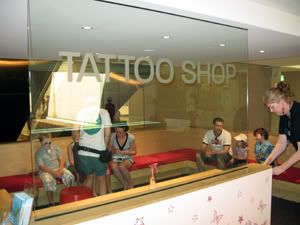
• Developed from her previous project that was 2 years ago
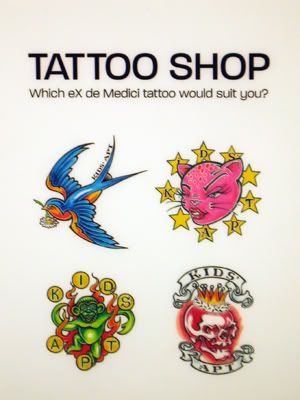
• She repositioned the tattoo for Kids APT and the finalised 4 images are chosen by the children – the top 4 favourite design
• To eX, Tattoo is seen as a new identity• The works in tattooing also reflects her watercolour works
Sound Track:• It is about children and their interaction with the world
• It can be said as the most dominant sound in the gallery
*************************************************
Kwon Ki-soo:• Works in many medium, including painting, installation and animation
• His works are seen as child-like/childish
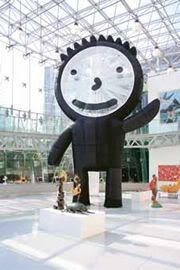
The character Dongguri. Isn't it cute?!
• The character Dongguri is a simple looking character that represents Ki-soo’s alter-ego
• When creating the works, he never thought of relating his works to the children at all
• Dongguri is cute now
- He started it with the idea of creating something to represent the identity of modern Korean people, especially the difficulties that the Korean face
- Through the process of drawing, the character Dongguri is created
Run Run Run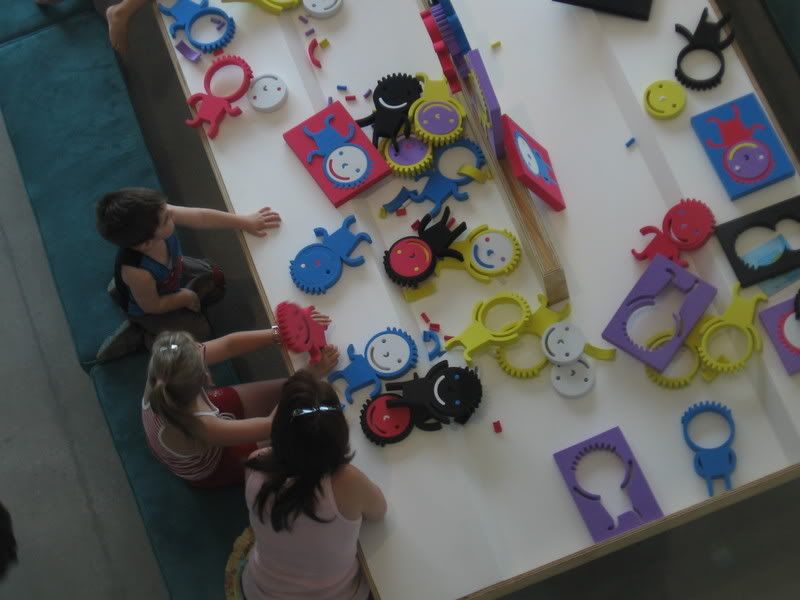
• What Ki-soo is trying to express is that modern people can’t stop and keep running in life
• He is worried about the fast-pace of modern life
This work invites children to interact with this colourful character in a playful environment. Children can manipulate hundreds of Dongguris made out of foam — creating and recreating different versions of the artist’s cheeky creature.
(this process of playing with the foam is physically slowing the active children down)“Beautiful misinterpretation”• His works are always misinterpreted
• The viewers see them as child-like and playful but his works are actually about more serious things in life
• But to him, this misinterpretation may not be bad at all as it helps him to reach out to more people and gave him more/new point of view to his works
• Therefore, he call it a ‘Beautiful misinterpretation”
*************************************************
Kids APT to Me: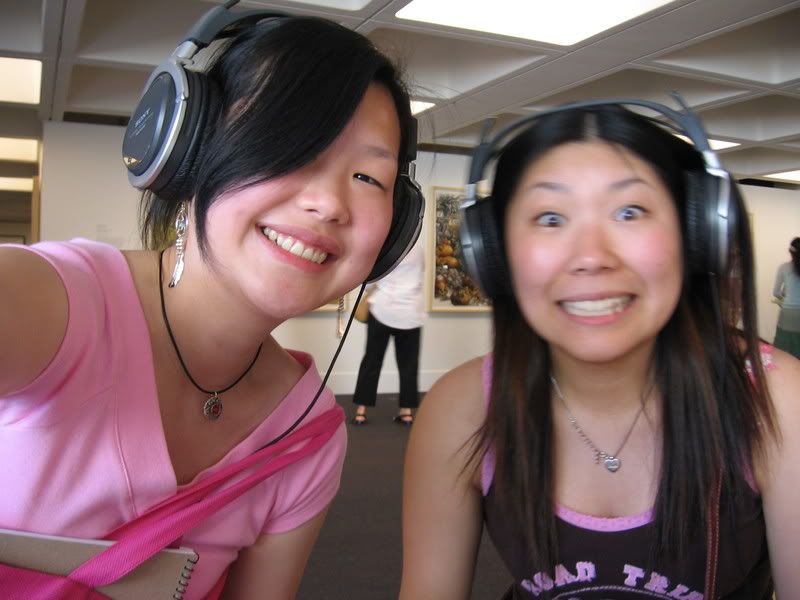
Despite the busy day, having to attend artist talks and panel discussions, me and erika are still trying to have some fun with the games that were designed for the kids (Kids APT)! hehe.. =P

Game Over! =(
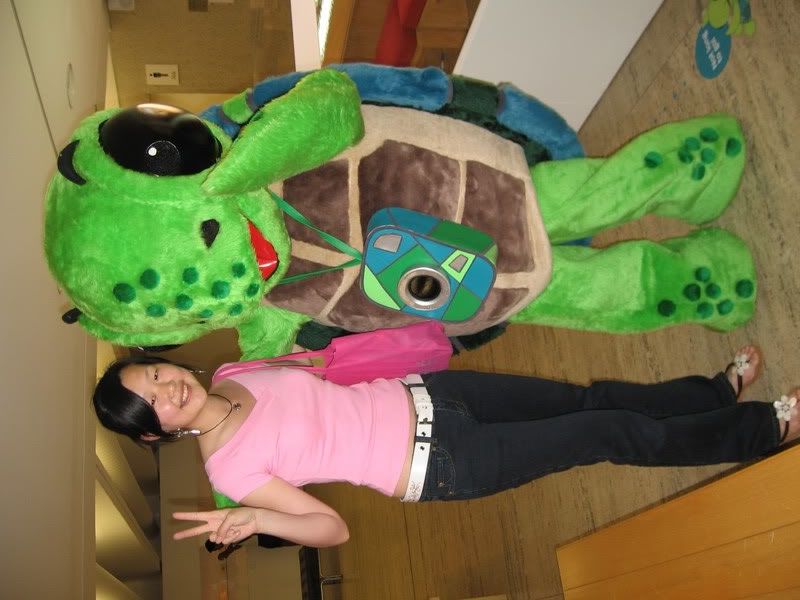
This is me with the Mascot of this exhibition, Scoot!! He is so cute! haha.. I want to hug him! Too bad i am old for it. hehe.. =P


seems like the kids are having a good time! Love the designs on their face! Wish i can turn into a kid for that day.. ha..
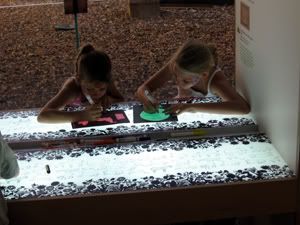 I think the Kids APT is GREAT! Kids and learn some things about the world and have fun at the same time!! **Two thumbs up!**
I think the Kids APT is GREAT! Kids and learn some things about the world and have fun at the same time!! **Two thumbs up!**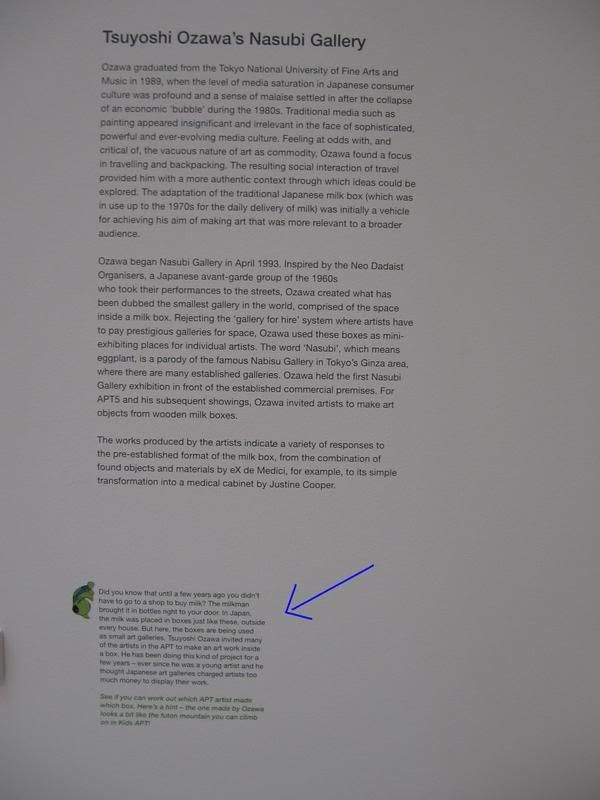
For the explanation on the wall,there is also a simpler version at the bottom for the kids to read. (the part where the arrow points to)
I feel that the height where the text is placed and the simple explanation itself, is a very good idea. It would help to encourage the kids who visit the gallery to have a higher interest on the exhibits.




